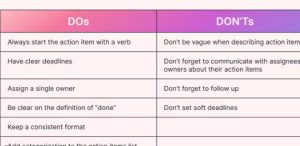How Do You Effectively Follow Up on Action Items?
Establishing Clear Expectations and Deadlines
Effective follow-up on action items starts with setting clear expectations and deadlines. This clarity prevents misunderstandings and ensures that everyone involved knows what is expected and when it is due. Research has shown that when teams establish and communicate clear deadlines, task completion rates improve by up to 40%. It is crucial that these expectations are communicated during meetings and documented in a shared space accessible to all relevant team members.

Regular Monitoring and Updates
Consistent monitoring is key to effective follow-up. Implementing regular check-ins can help keep tasks on track and identify any roadblocks early. These updates not only reinforce accountability but also provide opportunities for team members to request assistance or resources to complete their action items. A study indicated that teams conducting weekly progress reviews saw a 25% increase in productivity, attributed to the proactive resolution of issues before they became significant obstacles.
Utilizing Digital Tools for Tracking
In today's digital age, leveraging technology to track and follow up on action items is non-negotiable. Using a digital action item tracker or project management software can streamline this process significantly. These tools offer features like automatic reminders, status updates, and visual progress indicators. Data from a recent industry survey highlighted that teams using digital tracking tools reduced their project delays by 30% compared to those using manual tracking methods.
Encouraging a Culture of Accountability
Creating a culture of accountability within the team is vital for the effective follow-up of action items. This involves not only setting clear responsibilities but also building an environment where team members feel committed to their tasks and empowered to achieve them. Encouragement from leadership and recognition of successful task completion can reinforce this culture. According to a business management study, teams where leaders actively engaged in follow-up reported a 50% higher rate of on-time project completion.
Learning and Adapting from Each Project
Effective follow-up also includes learning from each project and adapting processes accordingly. Post-project reviews that examine what went well and what didn’t can provide valuable insights for future projects. Implementing lessons learned can continually improve the efficiency and effectiveness of managing and following up on action items. Teams that consistently apply lessons learned see an improvement in meeting project goals by up to 35% over time.
Conclusion
Following up on action items effectively requires clear communication, regular monitoring, the use of digital tools, a strong accountability culture, and an ongoing commitment to improvement. By incorporating these strategies, teams can enhance their productivity and ensure successful project outcomes.
For more detailed strategies on how to follow up on action items and boost your team's performance, be sure to explore the linked guide. Implementing these practices can transform the dynamics of team projects, leading to better results and more efficient operations.
